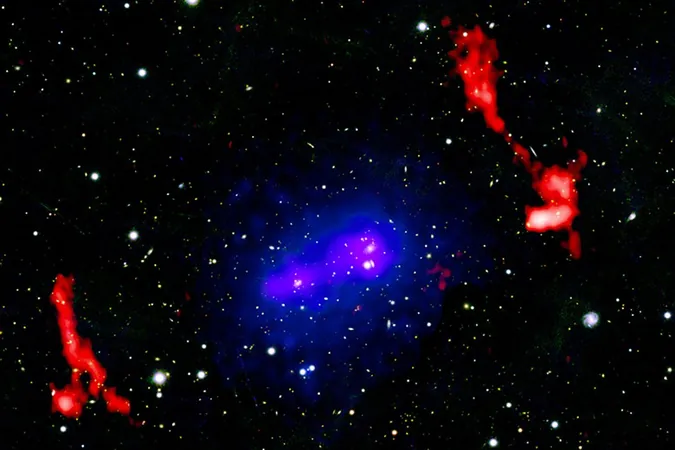
Accidentally Turning Lead into Gold: Physicists Make a Shocking Discovery at the Large Hadron Collider!
2025-05-13
Author: John Tan
Forget the legends of medieval alchemists! Scientists at the Large Hadron Collider (LHC) have stumbled upon something extraordinary—they’ve converted lead into gold, and it was all just an accident.
How Is This Even Possible?
In a scientific twist on alchemy, researchers discovered that the secret to transforming lead into gold lies in the atomic structure. While the world knows that lead and gold are different elements, the magic happens because gold contains three more protons than lead. The burning question is: can we extract those protons?
The answer is yes, but don’t expect this to be a simple task. At the LHC in Switzerland, physicists engaged in smashing lead atoms together at astonishing speeds—akin to recreating conditions right after the Big Bang. This risky venture led to the unforeseen production of minuscule amounts of gold: a staggering 29 trillionths of a gram!
Stealing Protons—The Science Behind the Magic
Protons reside in an atom’s nucleus, making them challenging to extract. The trick? Utilize an electric field powerful enough to move these charged particles. But here’s the catch: the nuclear force that binds protons is incredibly strong, necessitating an electric field a million times more powerful than those in natural lightning.
This intense electric field can be generated by colliding lead nuclei at nearly light speed. When the nuclei collide, they usually get annihilated, but often, they just miss each other, interacting through their electromagnetic forces.
The Electric Field That Creates Gold!
During these near misses, a colossal electric field forms, causing both lead nuclei to vibrate. Occasionally, one will eject exactly three protons, thereby transforming into gold! Imagine that—the tiniest brush with another atom leading to the creation of a precious element.
The Challenges of Alchemy in Action
So how do scientists know they’ve struck gold? Within the ALICE experiment, unique detectors, known as zero-degree calorimeters, tally the protons expelled from lead nuclei. While they can’t directly spot the gold nuclei, they estimate an impressive production rate of about 89,000 gold nuclei every second, alongside other elements like thallium and mercury.
A Golden Nuisance
However, this accidental gold creation isn’t a blessing. Once a lead nucleus loses its protons, it no longer maintains its perfect orbit within the LHC’s vacuum beam pipe—colliding with the walls within microseconds! This creates a significant challenge, diminishing the intensity of the particle beams over time.
In the end, while the accidental production of gold is a fascinating discovery, for scientists, it’s more of a pesky complication than a triumph.





 Brasil (PT)
Brasil (PT)
 Canada (EN)
Canada (EN)
 Chile (ES)
Chile (ES)
 Česko (CS)
Česko (CS)
 대한민국 (KO)
대한민국 (KO)
 España (ES)
España (ES)
 France (FR)
France (FR)
 Hong Kong (EN)
Hong Kong (EN)
 Italia (IT)
Italia (IT)
 日本 (JA)
日本 (JA)
 Magyarország (HU)
Magyarország (HU)
 Norge (NO)
Norge (NO)
 Polska (PL)
Polska (PL)
 Schweiz (DE)
Schweiz (DE)
 Singapore (EN)
Singapore (EN)
 Sverige (SV)
Sverige (SV)
 Suomi (FI)
Suomi (FI)
 Türkiye (TR)
Türkiye (TR)
 الإمارات العربية المتحدة (AR)
الإمارات العربية المتحدة (AR)